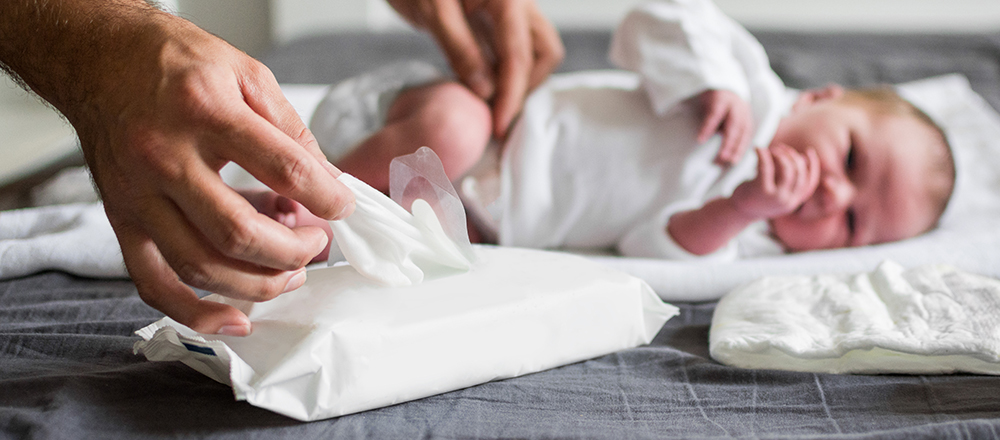
Breastfeeding Support Group
Get the support you need from other new moms and lactation consultants for free every Tuesday. This group is open to anyone in the community.
As a new parent, you’ll spend plenty of time looking at and cleaning up your child’s poop. What you find with each diaper change can differ in color, smell and consistency. These changes can be clues about your baby’s digestive health. Generally, parents can expect their baby’s poop to have specific colors and textures at certain ages and milestones.
Age Stages
Newborns
In the days following birth, your baby will pass meconium. This first stool is greenish-black and comprises bile, amniotic fluid and other substances they ingested in the womb. Meconium is sticky, which may make it challenging to clean off your baby’s bottom. This stool type passes within the first 24-48 hours after birth.
Under 6 Months
Once the meconium passes, your baby’s poop will change in color, consistency and frequency. These characteristics are different for breastfed versus formula-fed babies during the first week of life.
- Breastfed newborns may poop several times throughout the day or after every feeding. These stools are usually yellowish, like mustard, and loose or soft.
- Formula-fed babies generally have thicker, firmer stools. These stools are usually a shade of yellow or light brown and more odorous than breastfed babies. They also poop less frequently — as little as once per day.
While the color and consistency of these poops remain consistent until you introduce solid foods, your baby may poop less frequently after their first week of life.
Under 1 Year
Once your baby moves beyond breastmilk or formula, their poop will also change. As you introduce different foods, you may notice your baby’s stool turn to shades of green or brown. Depending on what they’re eating, it may temporarily be other colors.
Toddlers: 1-3 Years Old
As your baby grows, their poop gets stinkier. It will also get thicker and become more consistently brown. It’s common for toddlers to have a bowel movement every day and sometimes several times per day. If your baby goes less frequently, it’s okay; every baby is different, including their poops.
Know When to See a Doctor
While babies’ poop can look and smell different as they develop, most of these variations aren’t cause for alarm. However, contact your pediatrician if you notice:
- Blood. A small amount of bright red blood may be from straining while constipated. However, a large amount of blood in the stool, which may appear red or black, could signal something serious and should be treated immediately.
- Constipation and diarrhea lasting longer than 24 hours. While occasional constipation and diarrhea are not a cause for concern, sudden or frequent constipation or diarrhea may be a sign of digestive issues, infection or food allergy. Diarrhea can quickly lead to dehydration in infants.
- White stool. Chalky stool may indicate your child’s gallbladder and liver aren’t properly functioning.
Have more poop questions or concerns? Contact a Meritas Health pediatrician to learn more.



